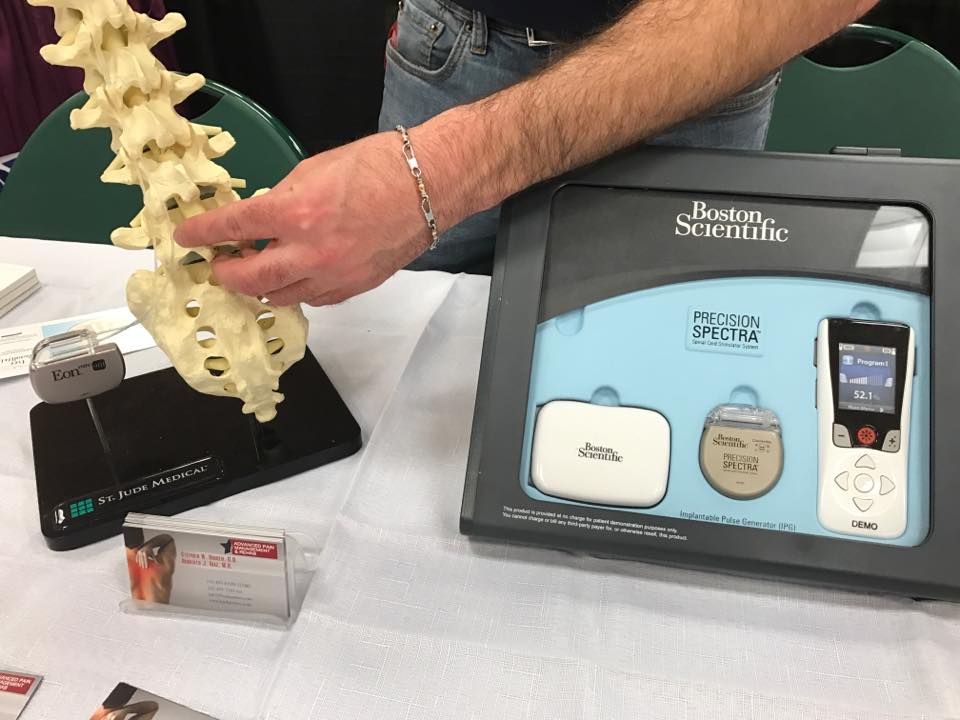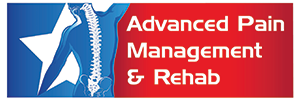Blog written by Erin Kirwan of Savvy Media PR for Advanced Pain Management
On Tuesday, Dr. Stephen Dinger, D.O., and Pain Specialist with Advanced Pain Management and Rehab, spoke to a room full of people with one thing in common – pain. Some in the audience admitted they were actively in pain at that very moment while others offered an encouraging pat on the back to someone they care about who came to learn about possible solutions to lessen their debilitating pain.
And they’re not alone.
When we talk about debilitating chronic pain it is helpful to consider the numbers of those affected. According to a study conducted by the Institute of Medicine of the National Academies, 100 million Americans suffer from chronic pain. It affects more Americans than diabetes, heart disease and cancer, combined.
Dr. Dinger spent time outlining the steps he and his team of specialists take when helping someone navigate pain treatment in a special presentation hosted by Boston Scientific.

“It’s important to first establish what type of pain you have,” said Dr. Dinger. He outlined the characteristics of what it looks and feels like to suffer from acute pain which is more temporary compared to chronic pain which is more long-term, lasting three to six months, to be specific. That’s the brunt of the pain Dr. Dinger is accustomed to treating. He also talked about the importance of a patient’s treatment that begins with proper diagnosis and the systematic determination of what type of pain a patient might be experiencing. Is the pain caused by trauma to a specific area on the body? Or, is the pain more neuropathic where a patient might be complaining of burning sensations or numbing type pain? These determinations are crucial, says Dr. Dinger, as he and his patients determine the best possible treatment plan.
“It’s not always cut and dry,” Dr. Dinger said, pointing again to the importance of pinpointing the root cause of the patient’s pain. “If we don’t have the correct diagnosis then we’re just throwing things and hoping something works. If we have the correct diagnosis then we can target the treatment much better.”
Sounds commonsense enough. But what Dr. Dinger went on to explain is that a correct diagnosis, including the category of pain a patient is experiencing, means a lot.
Dr. Dinger said he attacks pain treatment with a systematic approach referring to different tiers of management. The first tier often includes non-pharmaceutical medications, modalities, and therapies such as physical therapy, relaxation, acupuncture, and yoga. These modalities are recommended as a first-approach by the American College of Physicians. The second tier of treatment might include stronger medications and adjunct medications, as well as a few procedures such as injections which are especially helpful if inflammatory issues are involved. If the pain still isn’t going away, Dr. Dinger said he begins to look at more advanced therapies that may include Cryotherapy or heating modalities, such as Radiofrequency ablation (RF). These are minimally invasive and are used to treat neck, back, hip, and knee pain.
Dr. Dinger also went onto spend some time talking about one of the newer treatments being used by pain specialists – PRP, or, Platelet Rich Plasma injections. PRP uses a patient’s own blood to heal an area that may be a source of pain. A simple blood draw and injection can do the trick. He mentioned that PRP is one of the treatments not usually covered by insurance, yet. But Dr. Dinger did say he suspected PRP, due to its success rate, would likely be covered by insurance in the future and that more and more physicians are using it to treat a myriad of health concerns including pain.
“How many of those PRPs have you done?” one woman in the audience asked.
“About 35 or 40” replied Dr. Dinger. “And we’ve been very happy with those results.”
Other types of pain treatments discussed included intrathecal pumps aka pain pumps which might be a good choice for patients looking to use a very little amount of medicine or to avoid opioid use. With pain pumps a pump or port is implanted into the patient in either a patient’s abdomen or near the flanks and delivers medicine through the spinal fluid which can be very effective according to Dr. Dinger.
After answering many questions on pain pumps, Dr. Dinger moved on to talk about Spinal Cord Stimulation or, SCS, with the treatment of pain. Read more on how it gave one of Dr. Dinger’s patients suffering from back pain a new lease on life, here. Spinal Cord Stimulation is a treatment Dr. Dinger says he sees huge success with. He noted that SCS has been around for many years but the FDA approved treatment has seen a tremendous amount of progress with very impressive products in recent years.
With Spinal Cord Stimulation, Dr. Dinger said, he first completes a trial with the patient where the lead is put into the patient and the patient goes home for the week to, well, live life. Sounds pretty good, doesn’t it? The patient gets to take the SCS for a spin, in essence. The patient then returns to see Dr. Dinger where he looks at how well the modality is helping, how well the patient is sleeping, and whether the patient’s quality of life has improved in that week.
“It’s one of the few things in medicine that you can test drive before it’s put in,” said Dr. Dinger.

One of Dr. Dinger’s patients, a female who suffers from herniated discs in her back region, spoke to the group about her personal experience with having a Spinal Cord Stimulation implant for the last several years.
“I have had no problems with it,” said Susan Baker. Better yet, Baker shared that she no longer uses any pain medication. She has prescriptions for pain should she need medication, however, she has yet to take it thanks to the pain relief her SCS brings.
“My husband and I have a small business that forces us to travel and stand and work in booths all day and I am able to do that and stand here comfortably and talk to you,” said Baker.

Patient, Susan Baker, shares her experience having had an SCS (Spinal Cord Stimulator) implant since 2013
At one point someone from the audience asked Baker if there was any downside to the Spinal Cord Stimulator.
“The only downside, if you want to call it that, is that I have to be careful I don’t take on too much because I can’t feel any pain. I have to remember that I still have an injury.”
You can watch Dr. Dinger’s complete talk on Taking Control Over Pain, here.
For more information on Dr. Dinger, Advanced Pain Management, and whether it might be the pain solution you are looking for, visit APM’s website and follow APM on social media, here.
